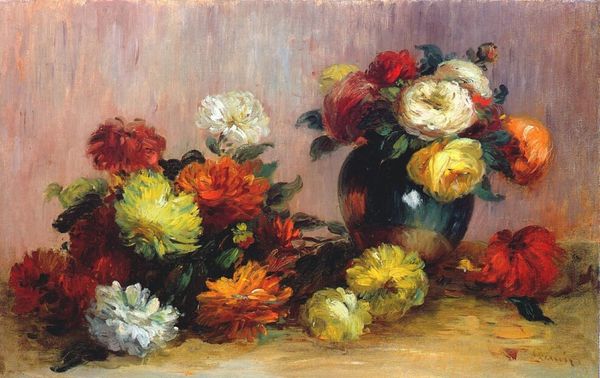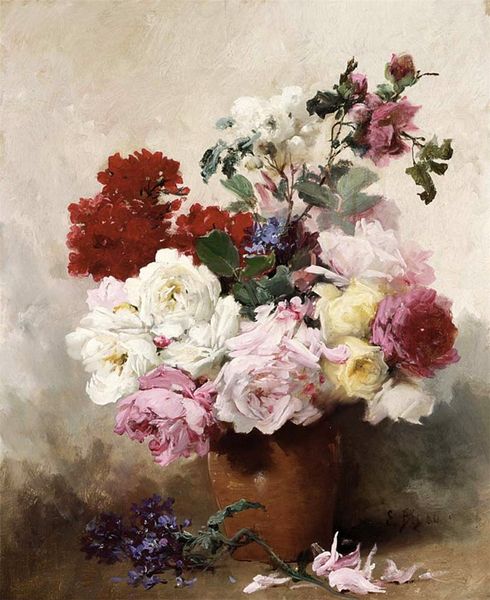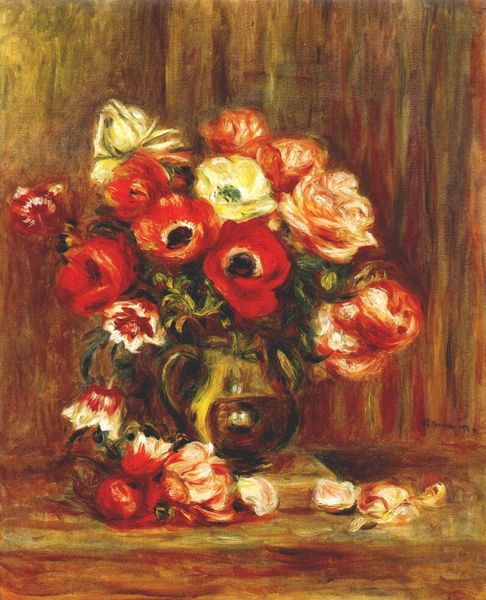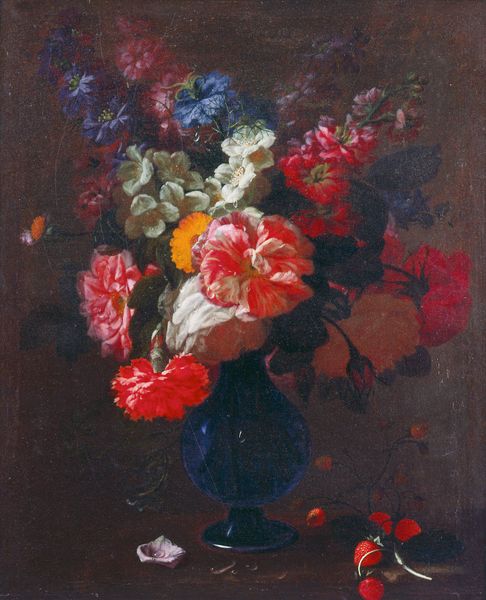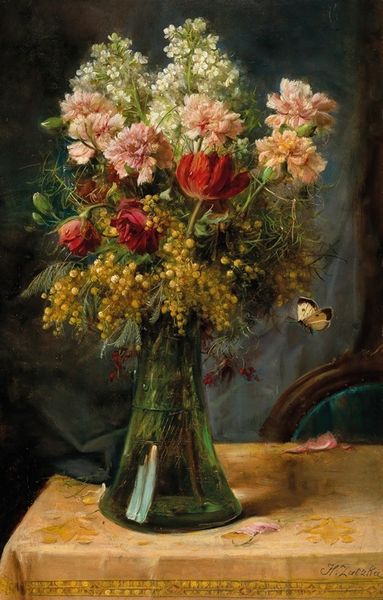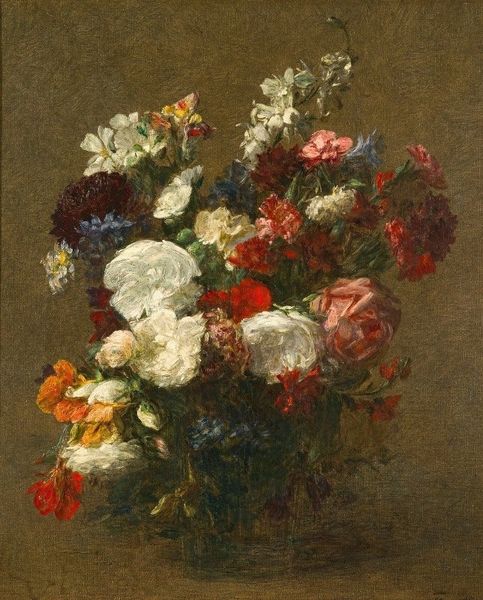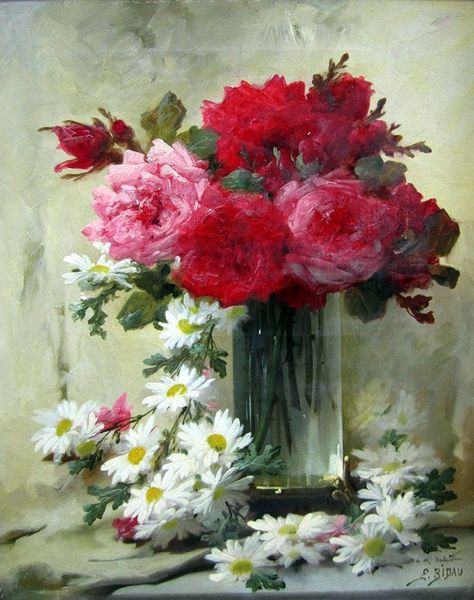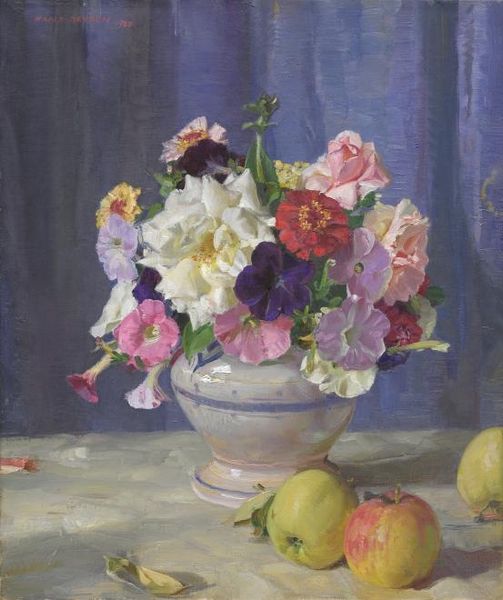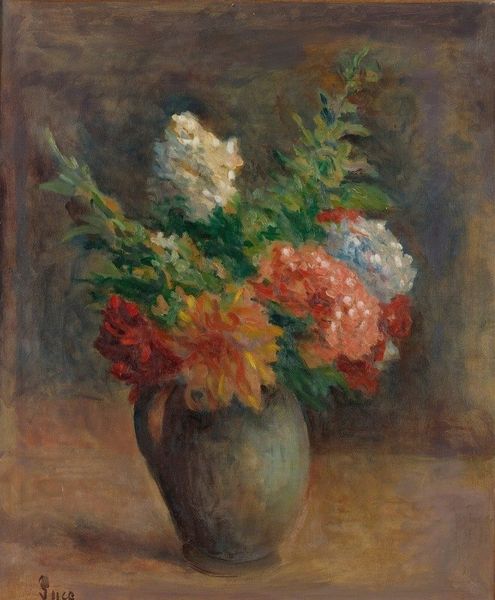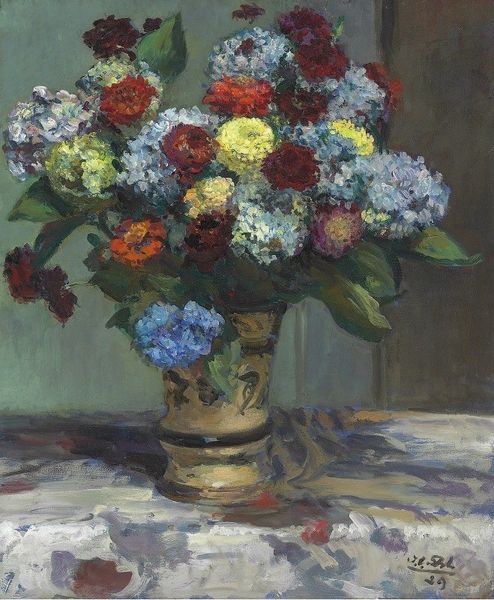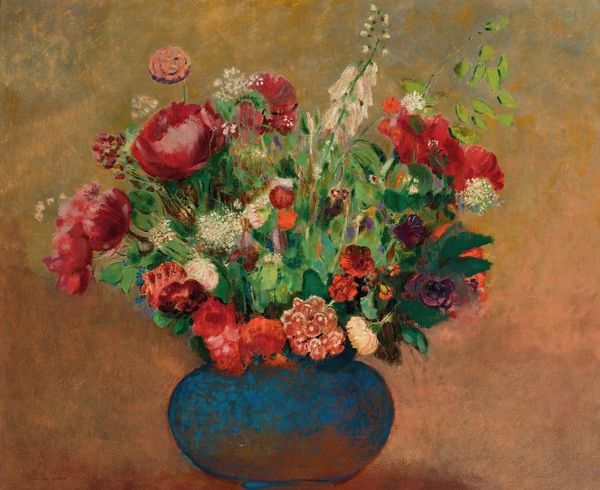
Copyright: Public domain
Curator: Before us hangs Konstantin Makovsky's "Flowers 2", an oil painting rendered in 1884. The vibrant hues and delicate composition immediately suggest a still life tradition deeply intertwined with Romantic sensibilities. What are your initial impressions? Editor: The sheer abundance strikes me first. It’s almost overflowing with life – a cornucopia of blooms. The contrast of the vibrant reds, whites and blues against the murky greens creates an intense visual energy. It feels like a celebration, but perhaps a fleeting one. Curator: Absolutely. And that sense of transience is crucial. Floral still lifes often functioned as vanitas paintings, meditations on mortality disguised as beautiful arrangements. Makovsky was painting during a time when photography was rapidly changing how art represented the world, making the artifice of the painting even more apparent. Editor: Yes, and consider the symbolic weight of each flower. The poppy, prominent in the bouquet, often signified sleep or oblivion. Daisies can represent innocence and purity, and cornflowers evoke delicacy and refinement. The deliberate placement – some vibrant and upright, others drooping – seems pregnant with meaning about stages of life and beauty in decay. It's a poignant visual narrative, and this narrative might refer to the turbulent years Russia was experiencing at the end of the 19th century with social and political turmoil on the rise. Curator: I find your interpretation of social commentary through this floral piece fascinating, especially concerning the societal shifts of his time. Makovsky was an established academic painter; his society portraits brought him renown. To engage in a somewhat humble subject as this floral still life offers us another lens. Did it speak to different audiences or reflect a broader shift in what was deemed appropriate subject matter for "high" art? Editor: That's a compelling question. Flowers themselves are, in a way, social objects, present at crucial life events and holding specific cultural meanings that shifted through time. Makovsky, a member of a new artistic wave interested in a certain aesthetic, also was interested in exploring those objects and giving a visual voice to symbols. Curator: An insightful connection indeed. Thinking about how art navigates social change enriches how we look at paintings that might, at first glance, seem solely decorative. Editor: Exactly. What began as a riot of color slowly reveals layers of emotional, cultural, and historical significance, making it far more impactful.
Comments
No comments
Be the first to comment and join the conversation on the ultimate creative platform.
